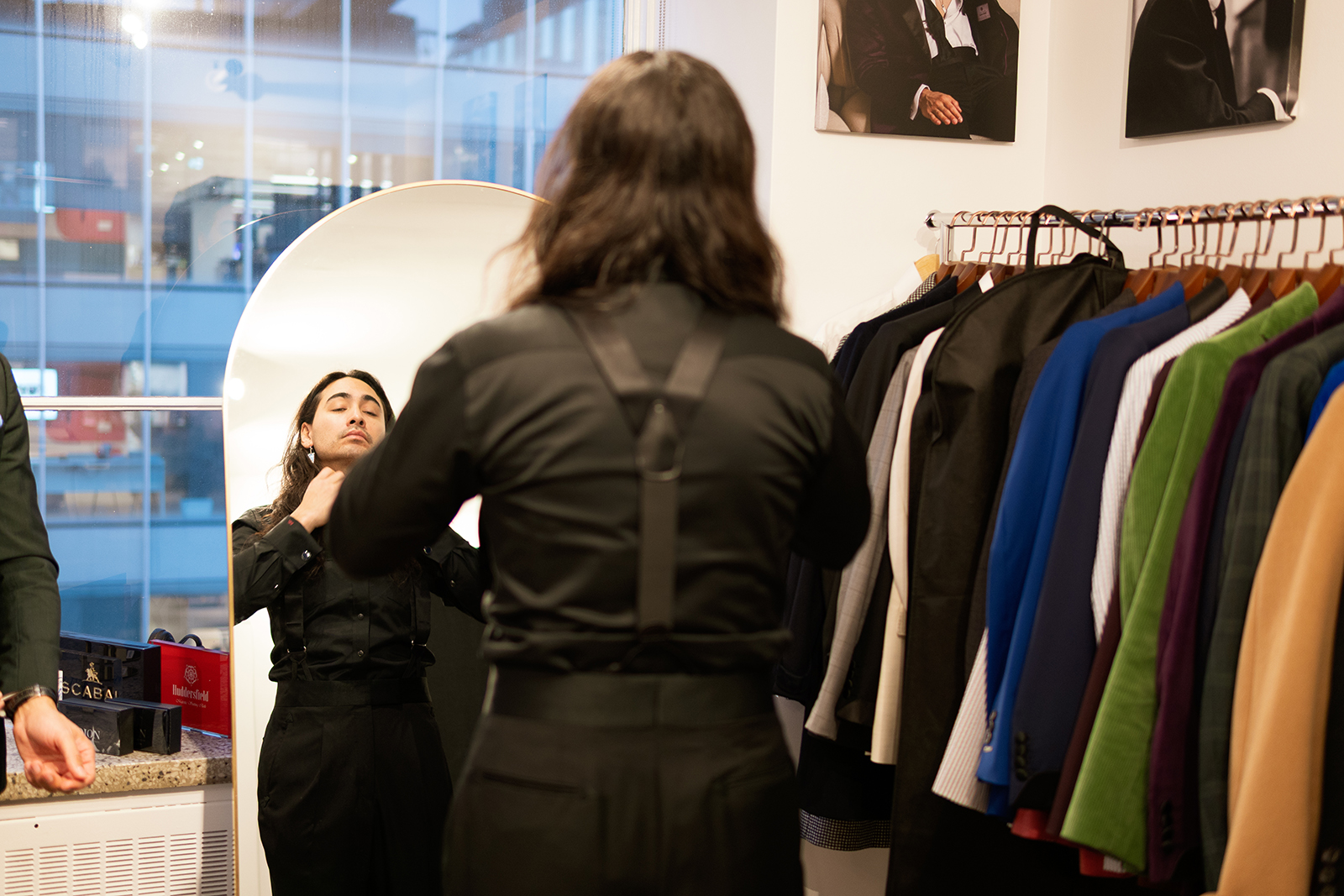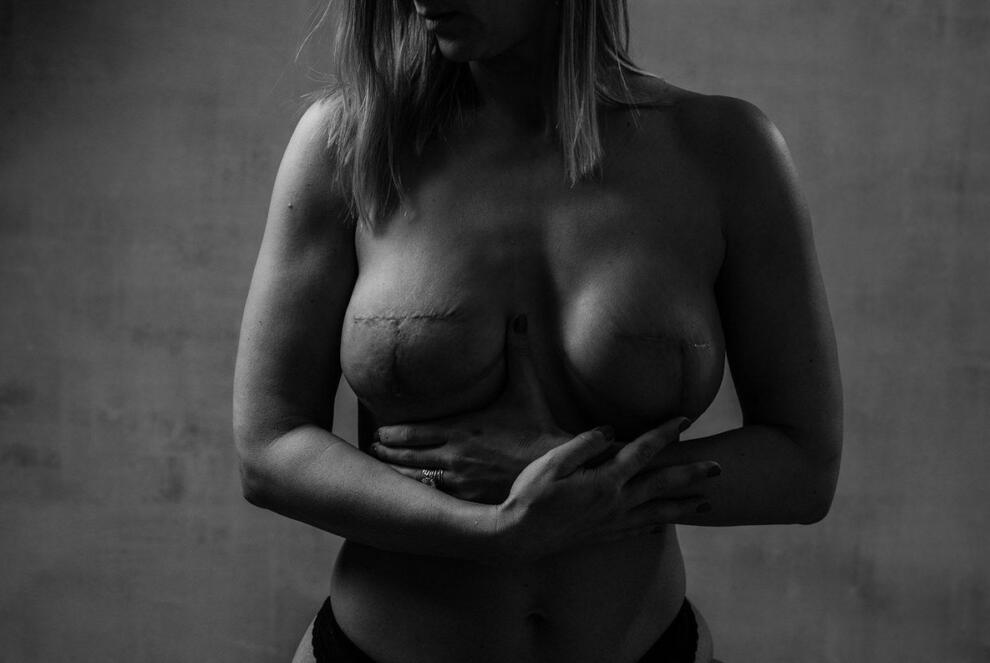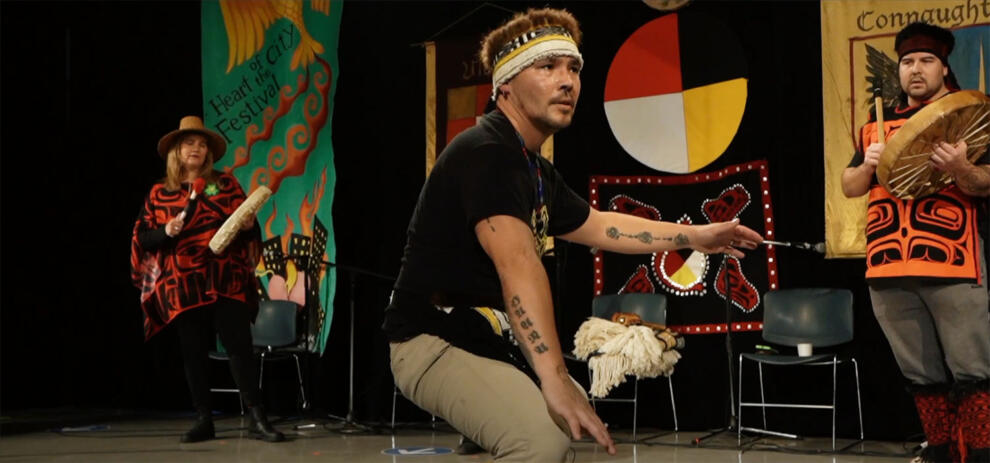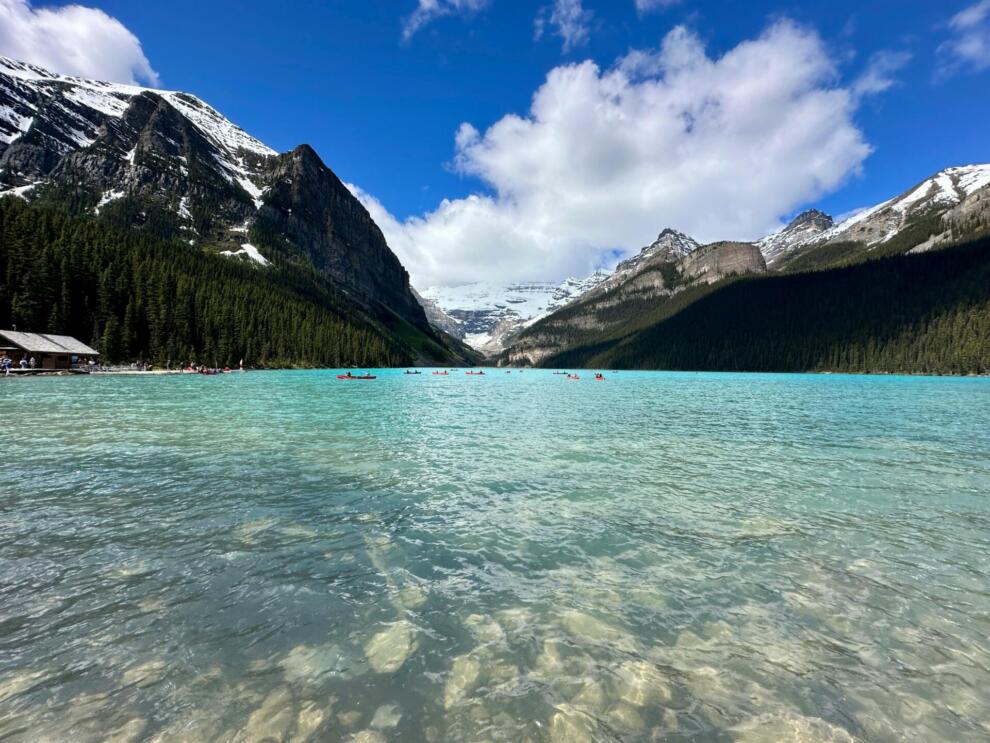Dressing to Represent: Sugarcane Director and Team Show Off Culturally Inspired Style on the Red Carpet
When you make Hollywood history with a groundbreaking Oscar nomination, you want to seize the moment. As the first Indigenous North American filmmaker to be nominated for an Academy Award in the Oscars’ 97-year history, Julian Brave NoiseCat knew he wanted to make a lasting sartorial impression—one that honored both himself and his rich cultural heritage. So he partnered with a styling team that brought together the best of Canadian design—both Indigenous and Western traditions. The result was a set of distinctive looks that balanced red carpet refinement with deeply personal, exquisitely detailed storytelling.
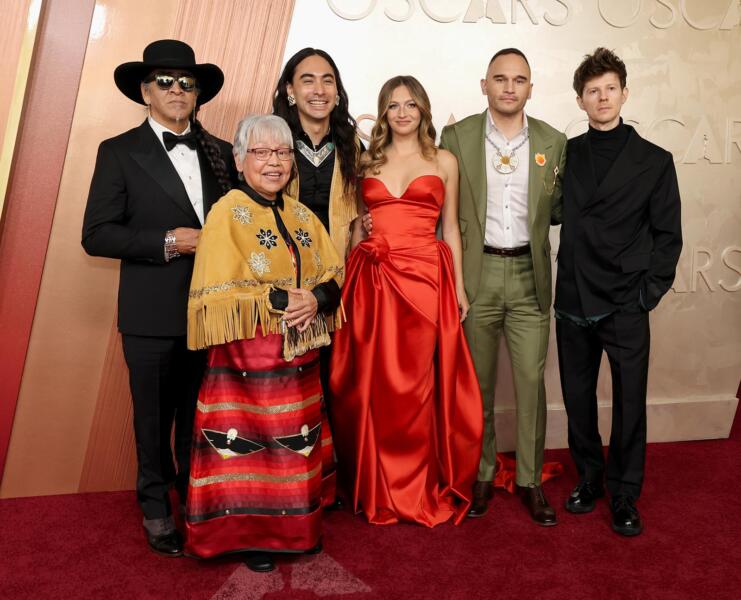
Sugarcane, nominated for Best Documentary Feature, is an intricate cinematic portrait of a community during a moment of international reckoning—an investigation into abuse and missing children at an Indian residential school run by the Catholic Church. It’s a tough, important film examining the ongoing turmoil of colonization many Indigenous communities continue to fight.. Acquired by National Geographic, the film features director and activist Julian Brave NoiseCat, his father Ed Archie NoiseCat, and Chief Willie Sellars, Chief of Williams Lake First Nation.
To outfit the team for their red carpet debut, NoiseCat collaborated with Ojibwe celebrity stylist Amanda May Daly and The Sartorial Shop, a bespoke atelier based in Vancouver. We spoke with the shop’s CEO and Creative Director Zahir Rajani about the honour and responsibility of styling for this historical event.
How did The Sartorial Shop become involved in styling Julian Brave NoiseCat for his Oscar debut?
In October 2024, we had the pleasure of collaborating with Amanda May Daly for the first time. Right off the bat, it was clear there were synergies and that we enjoyed working with one another. After our collaboration was complete, Amanda mentioned there may be a future opportunity to work together on red carpet looks for the Oscars. Sure enough, things panned out, and we began working together to style looks for members of the Sugarcane cast.
Julian and his co-director Emily Kassie shed light on a vital piece of Canadian history in a way that’s singularly more powerful than any other adaptation I have seen. The story of Sugarcane isn’t an easy one to watch, but it’s an exceptionally important one.
What was your vision for the custom suits you created for this historic moment?
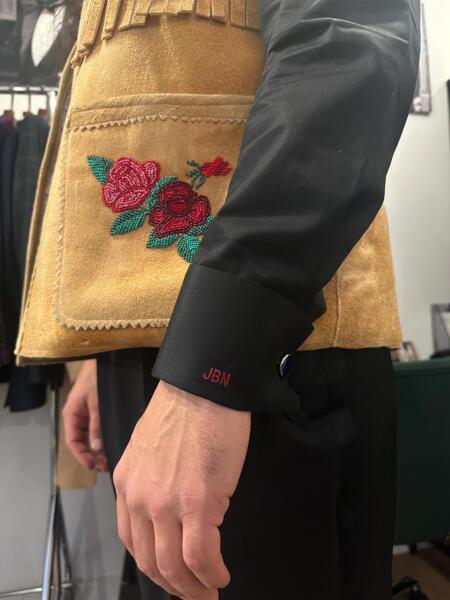
Our vision was their vision—what they wanted, we created. For Julian, his vision was a look that included an element of contemporary western modernism, as well as his Indigenous heritage. Ed, his father, was inspired by old Hollywood, which he combined with his own artwork. And Chief Sellars decided to do something completely unique, choosing a sage green two-piece suit that looked remarkable against the red carpet. Amanda offered her expertise every step of the way and really brought each of these looks to life.
Once we understood their visions, we helped select the right fabrics and custom suiting elements that fit the season, occasion, and venue. Based on how each individual wanted to look, we advised on fabrics that offered more flexibility in movement versus ones that would create a more polished look. When it comes to suits and tuxedos, ‘God is in the details’ as they say.
What inspirations, fabrics, and details went into the final look?
My wife Anastasia and I collaborated on this front. We talked and worked through every aspect of each and every look. There are a lot of unrealized complexities in the world of bespoke garments, which fortunately just happen to be our favourite to solve. We designed certain aspects of each garment and needed to stipulate and work through the most optimal way to make, for example, a western-style shirt red-carpet appropriate. Typically, you see most men wearing a white tuxedo shirt with black stud buttons. So we designed one of the shirts with a slim cut fit and study-style snap-on buttons, which gave it the formal look, and some other detailing which made it ‘Western’ in appearance, but also completely red-carpet appropriate.
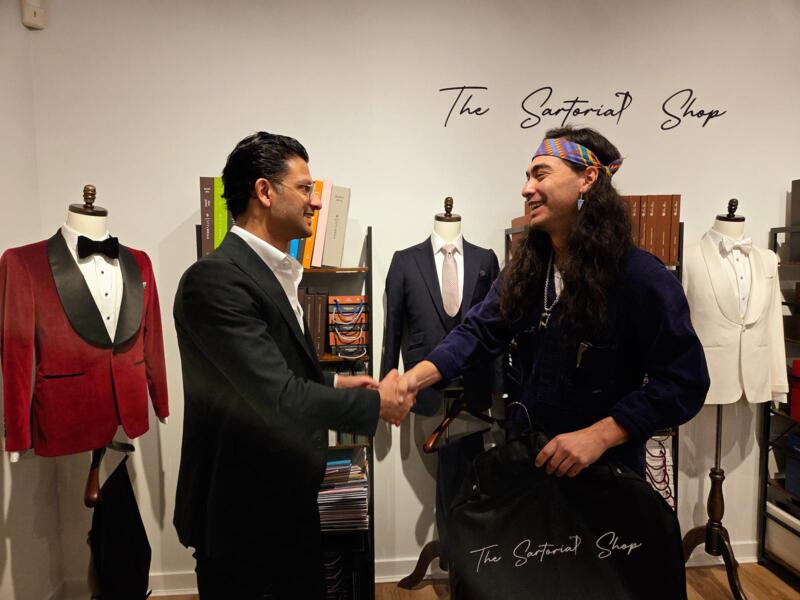
For Julian’s trousers, we added in some details that Amanda envisioned, like unique stylizations around the pockets and a nice thick waistband wrapped in satin, as well as a tuxedo seam down the side. Julian topped this look with a beautiful moose-hide vest gifted by his aunt, and passed down from her mother.
Ed wanted an old-Hollywood formal look—think Humphrey Bogart—so we created a bespoke two-piece tuxedo, with extra-wide peak lapels. Designer Himikalas Pam Baker created a cummerbund for Ed’s look that incorporated his own art. If you open up Ed’s tuxedo jacket, you saw his personal logo as a monogram, as well as a piping colour he likes to incorporate in the branding of his artwork.
Both Julian and Ed’s garments were made from cloth by renowned Italian fabric mill Vitale Barberis Canonico (VBC), a mill that’s one of the oldest in the world, and has been family-owned since 1663.
Chief Sellars came into our atelier knowing exactly what colour he wanted, and that colour was sage. In Indigenous culture, sage is healing; it’s used as traditional medicine. He also commissioned some stunning quillwork by Joe Big Mountain to complete the look.

How did you collaborate with Amanda May Daly to bring her vision to life?
Every garment we create is a co-creation, a collaboration between us and our client. It’s important to listen to what they have to say when they come into our atelier. That’s one of our unique differentiators and part of the reason for our existence. Too often, consumers get pushed in a direction they ultimately aren’t happy with. When you buy luxury, a part of what makes it such is the creativity, uniqueness, and originality of the piece being designed for you. We heavily prioritize this. With Amanda it was no different. In the end, it came down to great teamwork. Every single member of this historic team had a role to play, and everyone played it perfectly.
What does it mean to you and your team to be part of this landmark moment for Indigenous representation in Hollywood?
It’s such an incredible honour, honestly. It’s a moment of deep gratitude for us. And while it’s our first Oscars red carpet collaboration, it certainly won’t be our last. We could not have asked for a better first. To be able to be a small part of such an important story, a great team, and a historic moment, is more than we could have asked for.
Vancouver’s fashion scene has a strong emphasis on local and Indigenous talent. How do you plan to continue contributing to this evolving landscape?
Collaborations. It’s something which we are very open to, and something we quite enjoy. There are so many incredible indigenous artists in Vancouver and British Columbia, and Canada overall, and we want to help do our part in promoting their incredible work. Their artwork is the original artwork of these lands, and it’s a true honour to be able to showcase that.
Sugarcane’s nomination signals a broader movement toward inclusivity and recognition of diverse stories in Hollywood. But the red carpet choices of Julian Brave NoiseCat and others tell another important story. Fashion is more than just fabric. Weaving culture into design honors unspoken roots, celebrates identity, and shares histories that words alone cannot capture. Every pattern, textile, and silhouette carries meaning, turning garments into symbols of resilience, heritage, and expression. Culturally inspired fashion on the streets or on the red carpet reflects voices that have long been underrepresented in mainstream cinema and fashion.
Watch Sugarcane https://films.nationalgeographic.com/sugarcane
Shop Indigenous fashion through brands like Resist and the artists mentioned in this article.
Explore the intersection of fashion and cultural identity in your own closet.
Reconsider your wardrobe through the lens of identity. Ask: “What do my clothes say about who I am and where I come from? Who made them? What stories do they carry?”
